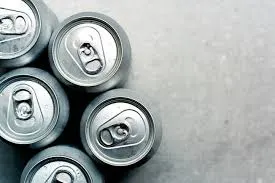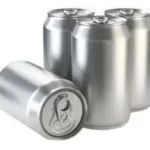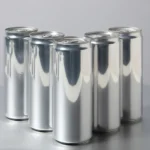With the growth of the beverage market in India,one packaging format that has become more prominent than ever is the beverage can. Beverage cans are becoming the packaging choice for a wide variety of products, including soft drinks, energy drinks, flavored waters, and ready-to-drink dairy products. We will also consider what these developments in beverage popularity imply for beverage brands and manufacturers within India. Additionally, we’ll explore ways to take advantage of these changes within your beverage co-packing strategy. Let’s explore why beverage cans are popular in India.
List of Things Which Are Making Beverage Cans Popular in India
1. The Evolving Indian Beverage Consumer
India’s beverage market is experiencing significant changes. As living standards have improved, urbanization has spread, and more people are working. Consumers are looking for convenience, portability, and variety.
According to market research, the aluminum beverage-can market in India continues to increase. This growth is primarily driven by ready-to-drink (RTD) and functional beverages.
2. Important Factors for the Increase in Beverage Cans
Let’s outline the specific issues that are increasing the popularity of cans in India.
a.) Convenience & Portability
Cans are lightweight, stackable, easy to transport, and distribute. They are well-suited for quick consumption formats such as RTD coffee, flavored water, and energy drinks.
One report says aluminum cans are increasingly favored because they fit with active lifestyles and urban consumer preferences in particular.
b.) Preservation & Freshness
Aluminum beverage cans provide better protection for contents from light, air, and other elements than some alternatives. It can extend the shelf life of the drink and better taste retention. The cans are the most suitable option for carbonated drinks, functional, and premium beverages.
c.) Flexibility in Branding & Design
Cans can provide a “360° – printable surface”, making the entire can body available for branding, graphics, and premium finishes. This is a key selling point for modern beverage brands looking to stand out in a crowded market.
d.) Supply-Chain & Manufacturing Developments in India
India’s aluminum production capacity has expanded, and the supply chains have improved. Due to the domestic manufacturing of can sheets and cans is getting easier. This lowers costs and provides more economic feasibility for use as packaging.

3. Implications for Beverage Companies & Co-Packers
For brands like Ayuray Organics or those considering co-packing, there are numerous benefits but also important factors to consider when choosing cans over other packaging formats.
Benefits:
- Premium Experience: A can feels more ‘premium’ than a standard bottle or plastic tub.
- Appeal to Modern Consumers: Urban consumers, Millennials, and Gen Z value sleek formats. That is why functional benefits are convenience.
- Shelf & Visibility: With a creative design, a can will stand out better on retail store shelves.
- Credible Sustainability Story: Credible Sustainability Story: You can use recyclable packaging to support brand values, marketing, and consumer perceptions.
- Logistics: Cans are lighter than glass bottles, more durable, and easier to transport and stack at retail locations.
4. How to Leverage Cans Ahead of an Ideal Packaging Strategy
If Ayuray Organics is contemplating a can or already uses cans. There are tangible actions you can take to make the most of it:
a.) Select the Appropriate Can Style
- Think about size – 330 ml, slim cans, mini-cans (150-250 ml) for wellness drinks. Data suggests that mini-cans are gaining popularity in India, especially for functional and premium drinks.
- Think About Compatibility: if your drink is carbonated, flavored, dairy-based, etc., soda and lining need to work with your product.
- Collaborate with experienced can-filling co-packers who understand liner chemistry, sealing, and other technical details.
b.) Design Packaging with Impact
- Use the entire surface of the can for branding: better graphics, a brand story, and sustainability.
- Use finishes that are appealing: matte, metallic, embossing, unique tabs, etc.
- You should use a packaging design that honors Ayuray Organics’ brand values of health, naturalness, and quality.
c.) Communicate Sustainability
Keep your audience aware of sustainability, how, why, and when you have chosen cans. Include phrases like “100% recyclable can”, “lightweight aluminum” to build brand trust.
Look into recycling programs and ways to offer recycling for consumers.
5. Reasons Why This is a Smart Strategy for Ayuray Organics
We are a brand that focuses on organics and clean, high-quality ingredients. Consumers are moving toward sustainable packaging, which aligns well with our brand’s goals:
- Complement Premium Positioning: A can that looks great adds to the product feel and looks good, thereby complementing premium positioning
- Supports Health/Wellness Trends: The e-commerce and growth of functional drinks/ wellness beverages in India are growing. Additionally, cans offer an excellent entry point with compact sizing
- Strengthens Sustainability Story: Where consumers are increasingly choosing brands which provide value to environment. A recyclable can look great and will strengthen the brand’s credibility
- Provides Respect and Convenience of Modern Distribution: Cans are ideal for e-commerce, modern retail, or on-the-go consumption in mind (i.e., gyms, cafes, wellness centers).
6. Challenges in Cans Manufacturing
Raw-Material Price Volatility: The price of aluminum can rise and fall significantly.
Recycling Infrastructure Gaps: In some parts of India, recycling is still an informal process.
- Consumer Perception: Some consumers may still think of bottles as “premium” or think of cans as “soft drink”.
- Technical Suitability: Certain beverages (for example, some dairy-based products or those that are highly sensitive to oxygen) will require some unique can linings or processing.
- Distribution & Cooling: Cans cool faster vs. bottles; if the point-of-sale environment does not chill appropriately, you will lose the benefit of the “cold can.”
7. Future Prospects
The market data does show definite momentum. For example:
The Indian aluminum beverage-can market is projected to grow to tens of billions of units by 2033, with a CAGR of approximately 4.9%. The format is expected to occupy a large share of the metal-packaging market in India, driven by both non-alcoholic and alcoholic segments.
FAQs
1. Are aluminum beverage cans better for the environment than plastic bottles?
In many ways, aluminum cans are 100% recyclable without any degradation of the quality. In India, the push for eco-friendly packaging and low plastic use is contributing to the great appeal of the cans.
2. Can aluminum cans increase my significant cost?
The cost depends on the raw material aluminum prices, design, tooling, logistics, etc. Can save your transport because they are lightweight.
3. Are cans suitable for all types of beverages?
Yes, cans are suitable for carbonated drinks, flavored water, energy drinks, and some dairy RTDs. But for some very delicate or oxygen-sensitive drinks, additional lining or processing is also needed.
4. What is the right size and format of the cans?
The common sizes of cans used are 330 ml or 500 ml. But mini cans are gaining popularity for premium and wellness segments.






